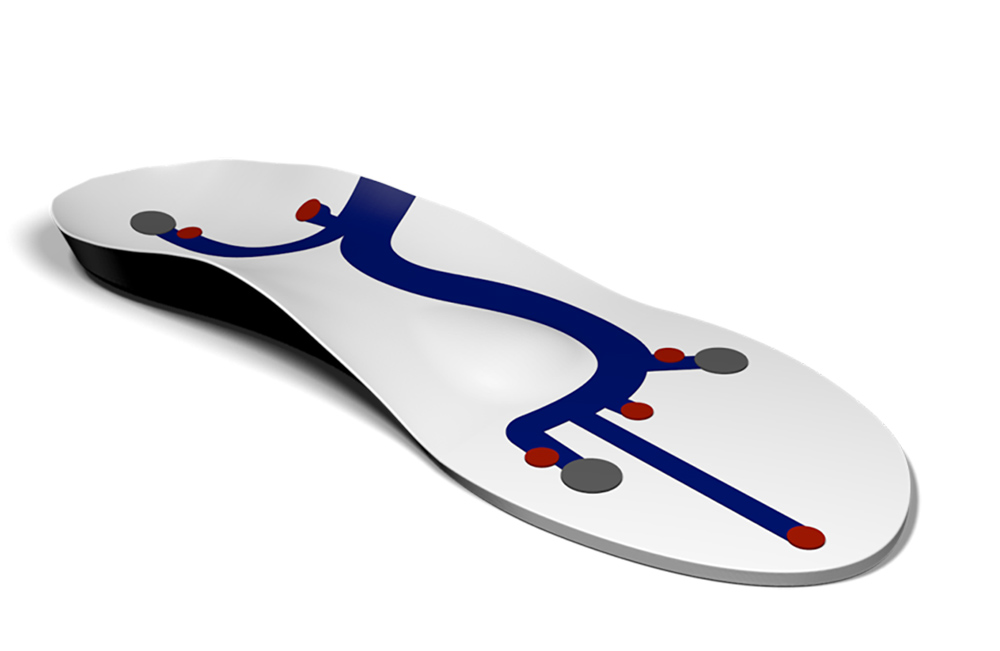Innovative insole protects against foot ulcers with diabetes
An innovative insole uses sensors to detect temperature changes in the feet at an early stage and can therefore prevent foot ulcers, one of the most common and serious complications of diabetes. This is the conclusion of a study led by Prof. Dr. Peter Mertens, Director of the University Clinic for Renal and Hypertensive Diseases, Diabetology and Endocrinology at Otto von Guericke University Magdeburg. The research team has developed and clinically tested its own telemedical platform. The results have been published in the Deutsches Ärzteblatt International.
The diagnosis of diabetes affects more than 10 percent of the population in Germany and often entails drastic lifestyle changes. Prof. Mertens explains: "Compared to the past 20 years, patients with diabetes can be supported much better today.Nevertheless, secondary diseases often occur years later, including vascular changes and nerve damage." Many diabetics also suffer from circulatory problems in their legs and feet. "Even the smallest scratches or pressure points can quickly develop into open and chronic wounds. It is therefore important that people with diabetes mellitus lubricate their feet and legs daily and examine them themselves, for example with a hand mirror," says the expert.

Photo: Prof. Dr. med. Peter R. Mertens, Director of the University Clinic for Renal and Hypertensive Diseases, Diabetology and Endocrinology Magdeburg.
Photographer: Sarah Kossmann/UMMD
The study conducted by the Magdeburg research group addresses precisely this issue and, by developing and testing an innovative telemedicine platform, also pursued a new approach to the early detection of foot ulcers in people with diabetes. Temperature sensors were integrated into specially designed insoles and issued to a group of 140 test subjects. The test subjects measured their foot temperature twice a day for around five minutes and the values were transmitted to the study doctor via a cell phone. At the same time, pictures of the feet and comments on the state of health could also be transmitted.
The study doctor used telemetry to monitor temperature rises of over 1.5 degrees Celsius.In the event of persistent rises over three days, the test subjects were asked to take the weight off their feet.A comparison group of 143 people received no telemetric support. After 24 months, the group without temperature measurement showed five incipient foot ulcers, while those with temperature measurement did not develop any ulcers.
Prof. Mertens emphasizes: "We have achieved a major milestone with this study.The patient feedback was consistently positive and the study results indicate that the implementation of a telemedical monitoring strategy can be effective, especially in patients with diabetes and polyneuropathy.The system enables early detection of foot changes and thus improves quality of life."
The research group is now focusing on the medical certification of the smart insole, which was developed in collaboration with the company Thorsis from Magdeburg.
 Photo: Insole with pressure and temperature sensor. Photo: Dr. Antao Ming
Photo: Insole with pressure and temperature sensor. Photo: Dr. Antao Ming
The study was funded by the European Regional Development Fund (ERDF) and the Ministry of Science, Energy, Climate Protection and the Environment of Saxony-Anhalt.
Original publication
Telemedical monitoring of plantar foot temperatures in diabetic patients and risk of foot ulcer development - The randomized "Smart Prevent Diabetic Feet" study; Deutsches Ärzteblatt 2024; 18.01.2024; DOI 10.3238/arztebl.m2023.0229
Contact
Prof. Dr. med. Peter R. Mertens, Director of the University Clinic for Renal and Hypertensive Diseases, Diabetology and Endocrinology Magdeburg, Tel. 0391/67-13236,






